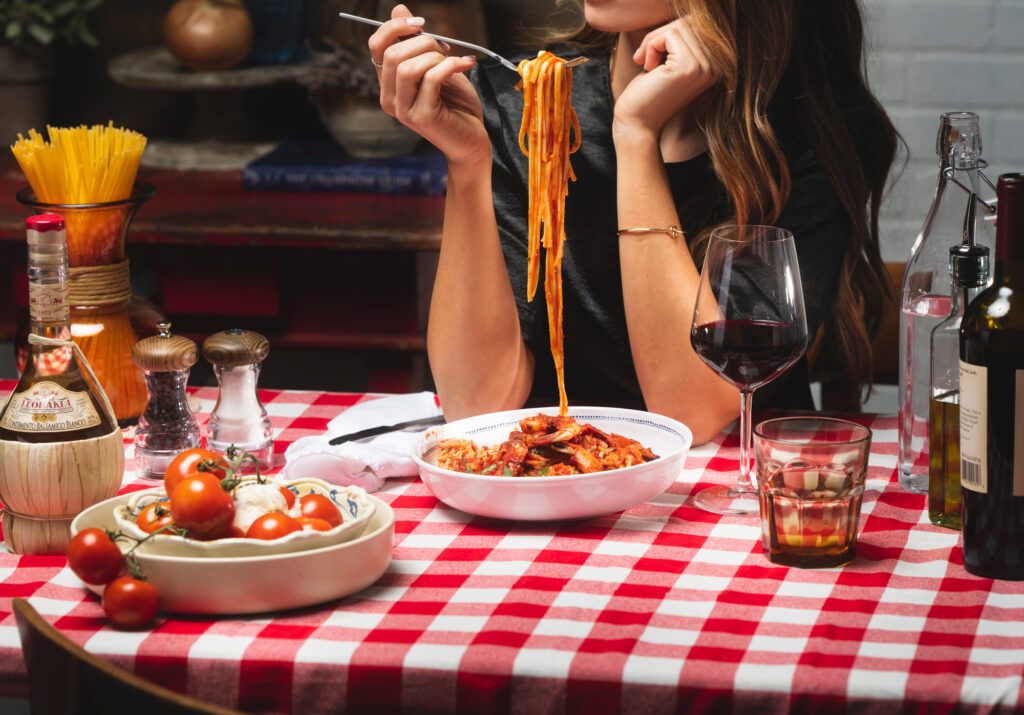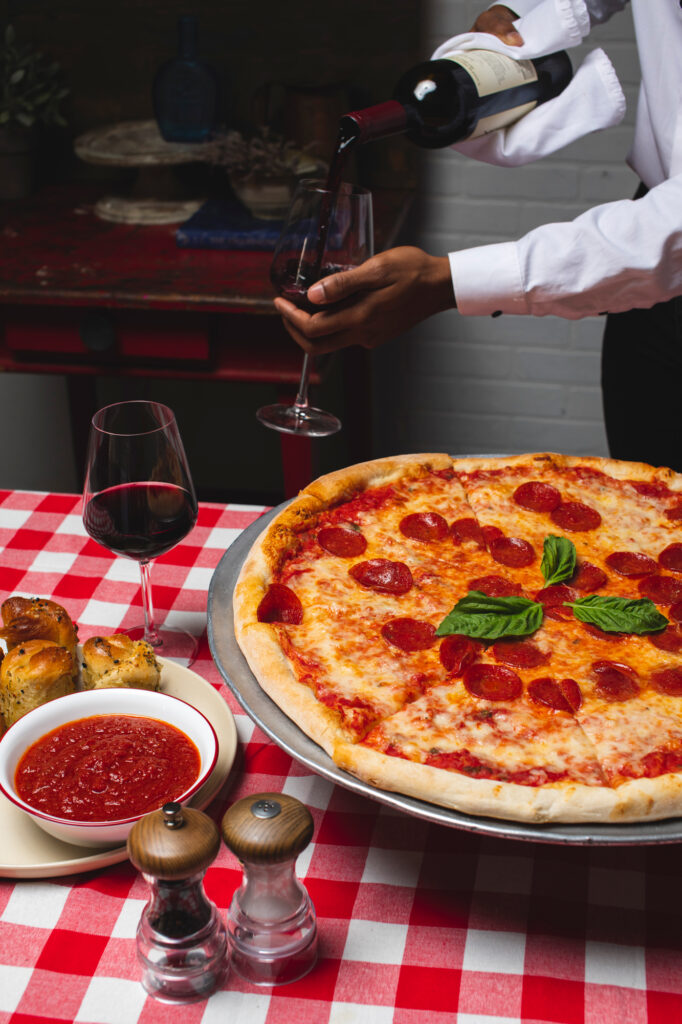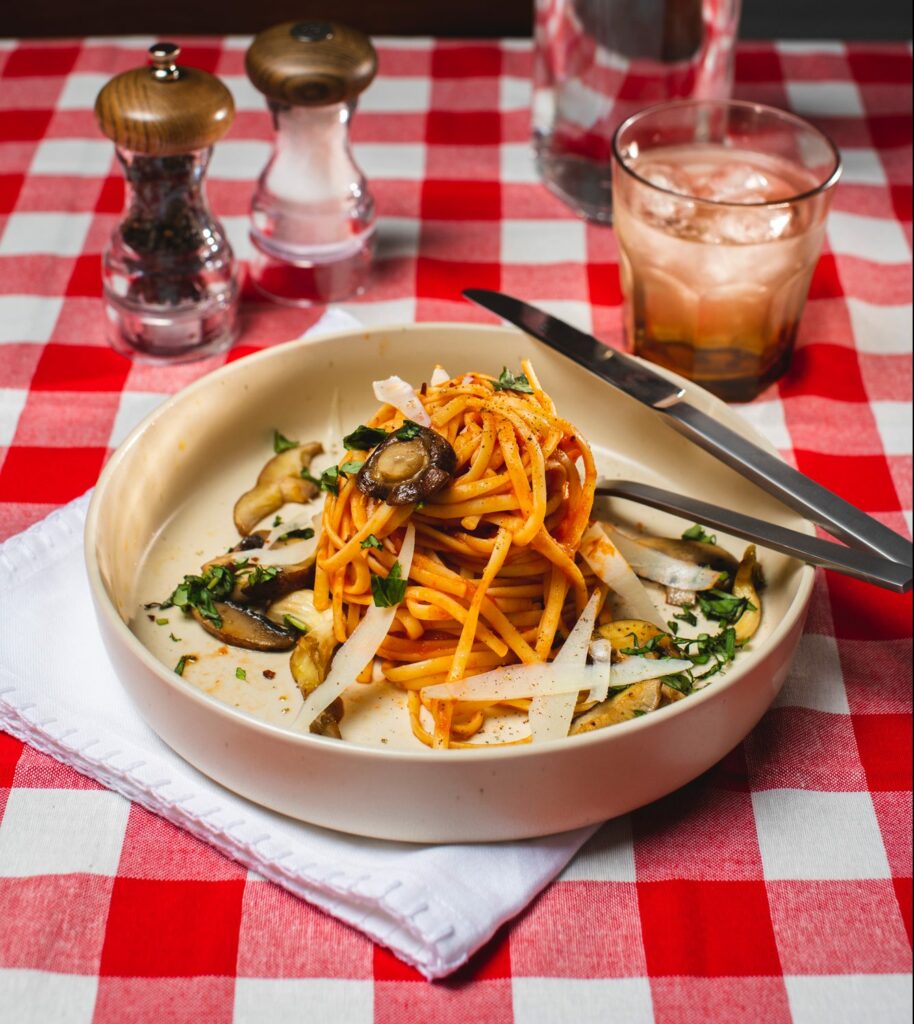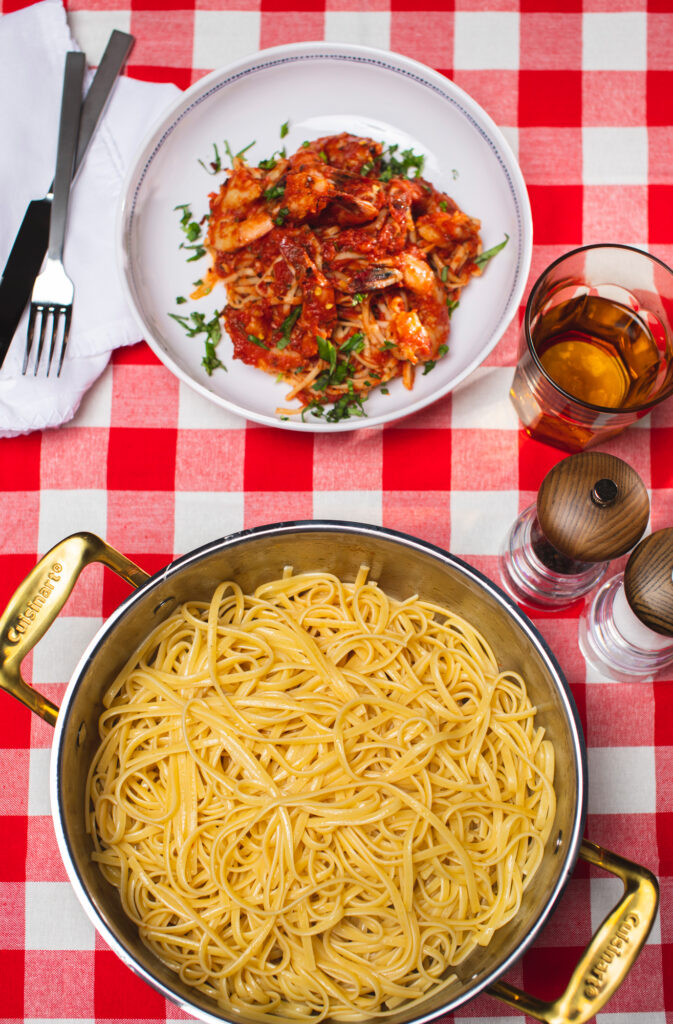Photography by Dan Austin
Cooking dinner can feel like reinventing the wheel each night. At the end of a long day, the last thing you want to do is cook a meal from scratch; however, a robust understanding of kitchen skills and rudimentary culinary preparations will unlock a wealth of options for you, making meal planning easy and reducing your cooking time in half.
Red sauce is one of the five “mother sauces” used throughout Western cuisine. Think of each mother sauce as the head of its own culinary family. Each can be adjusted or tweaked to take on a wide range of aspects used in Spanish, American, Italian, Creole, or French cuisine.
Let’s take a look at how two prominent Lakeland eateries make this classic. We’ll explore some of the best red sauces found in Lakeland and a recipe to create your own at home.

MARINARA
SCARPA’S ITALIAN RESTAURANT
Scarpa’s Italian Restaurant’s red sauce is a well-spiced marinara, contributing some extra heat to their specialty dish, the Shrimp Diablo. Scarpa’s fresh, house-made noodles are cooked in the diablo marinara sauce absorbing the deep richness of the spicy marinara. The sautéed shrimp are then arranged over the pasta, providing contrast in flavor, appearance, and texture.
Glenn Scarpa, owner of Scarpa’s Italian, explains that the secret to their Shrimp Diablo begins with their classic marinara sauce as the base, then, adding in heat to the sauce with crushed red pepper, a touch of olive oil, and other spices. “Not to get too technical, but a big part of the dish is our process for the shrimp. We infuse the shrimp in an olive oil and garlic mixture and then lightly cook it to perfection, ensuring that it is not overcooked and perfectly complementing the diablo sauce,” says Scarpa.
scarpasitalian.com
PIZZA SAUCE
PALACE PIZZA
Downtown Lakeland’s Palace Pizza makes a sauce with a vibrant herbaceous expression, perhaps with plenty of
basil and oregano, if our palettes are correct — though our journalists weren’t given insight into the secret formulation.

Red wines such as Merlot, Cabernet Sauvignon, Pinot Noir, Chianti, and Zinfandel pair the best with red sauce.
Unlike marinara or the red sauce recipe included below, which are precooked and used to top off a dish such as pasta, pizza sauce is not cooked before using. This allows the sauce to be thicker and not run off the pizza dough, allowing the sauce to cook simultaneously with the crust and other pie toppings. Despite the many components of pizza — dough, cheese, toppings — the secret sauce to achieving consistency and richness in flavor is… the sauce.
At Palace Pizza, the flavors are a reflection of the Schiano Moriello’s rich family heritage originating in Naples, Italy.
Owner Giovanni Moriello says, “It’s all about the pizza sauce. In a pizza, the sauce is the pizza’s main flavor component and the first thing everyone tastes when biting into their slice of pizza.” Palace Pizza has been using the same pizza sauce recipe for over 20 years. “Our pizza sauce is my dad’s (Salvatore Moriello) original recipe, and we have never altered it,” says Moriello.
palacepizzadowntown.com
RED SAUCE
THE HOME RECIPE
In my own kitchen, I prepare a pot of classic red sauce to keep portions in the freezer for future use. I enjoy a simple preparation of linguini noodles finished in red sauce, with butter-fried bella and oyster mushrooms. It’s finished with a sprinkle of minced basil, a crack of black and red pepper, and a bit of shaved parmesan. Now all you need is a date and cue Lady and the Tramp-style noodle kiss scene.
The red sauce recipe provided here can be reduced into a pizza sauce, added to ground meat for spaghetti bolognese, simmered with peppers and onions for shakshuka, layered into a lasagna, or used to braise meat in a slow cooker. Wise use of mother sauces sets you up for success in the kitchen, making the only hard part deciding what you’re in the mood to eat!
Understanding and keeping a stock of red sauce unlocks variety and potential in your kitchen. I can’t guarantee this red sauce will be as good as your nonna’s, but I hope you’ll have fun exploring your potential and the fundamental joy of sharing your food with loved ones.

To make this red sauce, you will need:
- A large sauce pot
- A stick blender or standard blender
- A small glug of olive oil
- As much garlic as your heart desires, cut into little slices
- A pinch or two of red pepper flakes
- A fistful of fresh basil
- 4 tablespoons of tomato paste. One of those tiny cans should do the trick.
- Two 28-ounce cans of whole peeled tomatoes
- Salt and pepper
*Optionally, a chunk of butter, if you’re feeling sassy
Instructions
1. Drizzle the olive oil into the bottom of a large pot over medium-low heat. Toss in your sliced garlic and let heat until it gently sizzles and becomes fragrant.
2. Add the red pepper flakes and continue cooking and stirring so the garlic turns golden.
*Note: if you only have dry herbs instead of fresh, add at this point and let sizzle for a few seconds before continuing with the recipe.
3. Add the tomato paste and continue to stir until the mixture has softened and combined with the oil, about three minutes. Now, add your canned tomatoes WITH all the juices, and increase the heat. When you reach a gentle simmer, lower the heat a touch to maintain that simmer.

4. Use an immersion blender to puree your tomatoes into a smooth sauce. If you don’t have an immersion blender, you can carefully ladle the tomatoes into a standard blender or food processor. Heck, you can even use a potato masher to thoroughly crush the tomatoes if you prefer a chunky, rustic sauce. Listen to your heart and decide your personal preference.
5. Now that you have a lovely smooth sauce, add your fresh basil and continue to simmer, stirring occasionally, about 30 minutes. You are just looking for the sauce to reduce slightly, becoming more “saucy” and less watery. Give it a taste and season with salt and pepper. It’s best to slightly under-season at this point because red sauce often gets used in other dishes which may get further seasoning.
6. If you used fresh basil, pick them out and discard at this point. (If left in, the leaves become stringy and bitter.) Stir in the chunk of butter for a little creamy touch.
7. You’re done! Use the sauce right away, or allow to cool and transfer to sealed containers. Keep chilled for about one week, or freeze in portions for your next spaghetti adventure.
